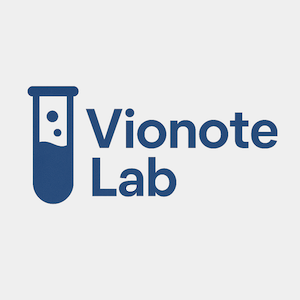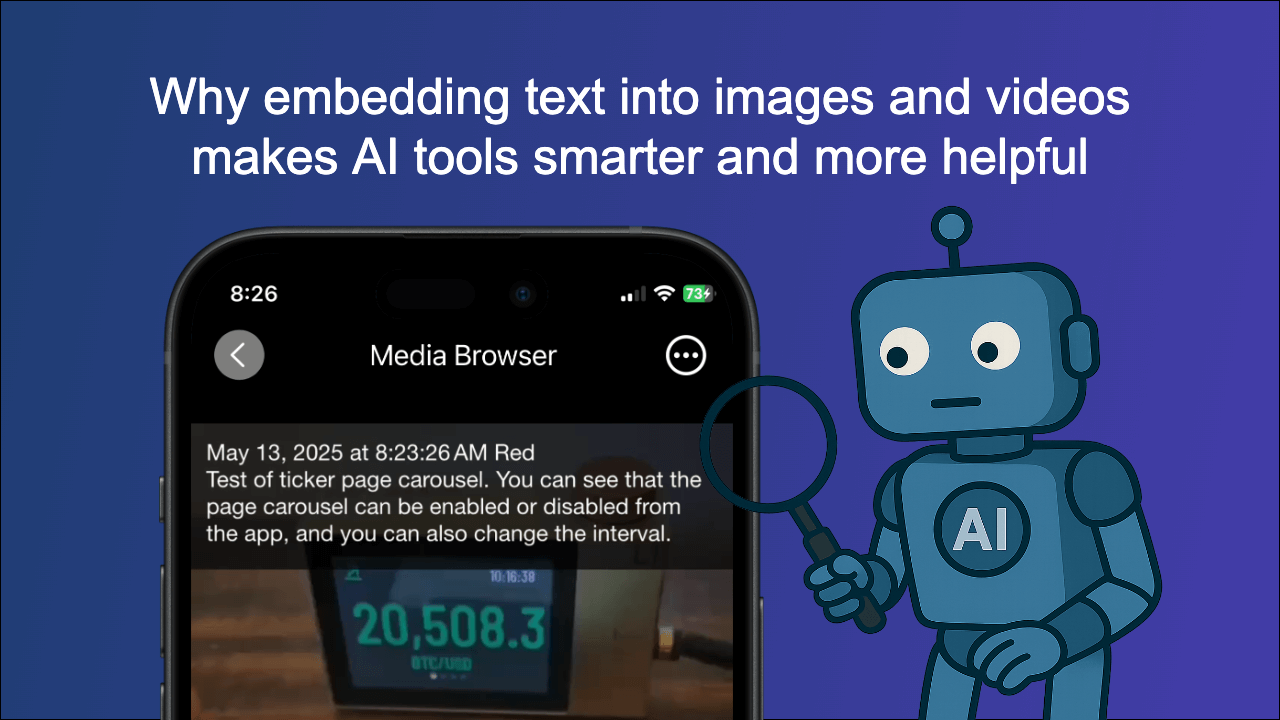
Product & Design
🧠 Why Embedding Text into Images and Videos Makes AI Tools Smarter and More Helpful

In an age where AI is becoming increasingly central to how we search, organize, and make decisions, the way we store information—especially visual content—matters more than ever.
Photos and videos are no longer just passive records. They are active data points in a world where AI can help surface insights, automate workflows, and solve problems. But here's the catch: without proper context, even the smartest AI may miss the point of your image.
So how do we bridge the gap?
By embedding text directly into your images and videos.
📌 Why AI Needs Context
Let's say you took a video of a broken machine in your lab. You know what it's about—but will your AI assistant understand?
Not unless you tell it.
Text annotations like "Sample #42, failed test under 80°C" or "Step 3: Assemble bracket — note misalignment" act as immediate semantic signals. They transform a generic image into a searchable, understandable piece of knowledge.
With this embedded text, AI tools can:
- Automatically categorize content
- Extract metadata for reports
- Cross-reference similar issues
- Make the media discoverable by keyword, tag, or topic
🔍 Better Search, Faster Decisions
AI-powered search tools—like iOS Photos, Notion AI, or custom assistants—perform dramatically better when there's embedded textual context.
Instead of "photo_8234.jpg", you now have:
"Experiment B — humidity failure after 3hr runtime, notes added by Alice"
Now the system knows what to look for, what it means, and how to help you.
🤝 Collaboration with Clarity
In team environments, embedded text eliminates guesswork. Engineers, researchers, teachers, and even clients can immediately understand what an image or video is trying to communicate without needing a separate email or document.
Plus, AI agents (like OpenAI's GPT or your custom Copilot) can process this embedded content more effectively, enabling smarter automations like:
- Auto-generating reports
- Drafting bug tickets
- Summarizing progress logs
- Suggesting next steps
🛠️ Real-World Use Cases
Here are some powerful examples of embedded text in action:
- Researchers log photos from field work with timestamp, GPS, and purpose noted directly on the image.
- Product teams annotate build videos to track progress or issues.
- Educators embed explanations in classroom footage to enhance later reviews.
- Families label old photos to make personal archives searchable by future generations.
🚀 The Takeaway
By embedding your thoughts directly into visual content, you are not just annotating—you are structuring knowledge for a smarter, AI-enhanced future.
This approach isn't just about organization. It's about empowerment. It's about making your media intelligent.
✨ Want to Try This?
Tools like Vionote are making it easier than ever to add notes to your photos and videos right at the moment of capture. These notes stay visible, searchable, and sharable—empowering both you and the AI tools you rely on.
In the age of AI, don't just store your visuals. Enrich them.
Empowering AI through intelligent media.
— The Vionote Lab